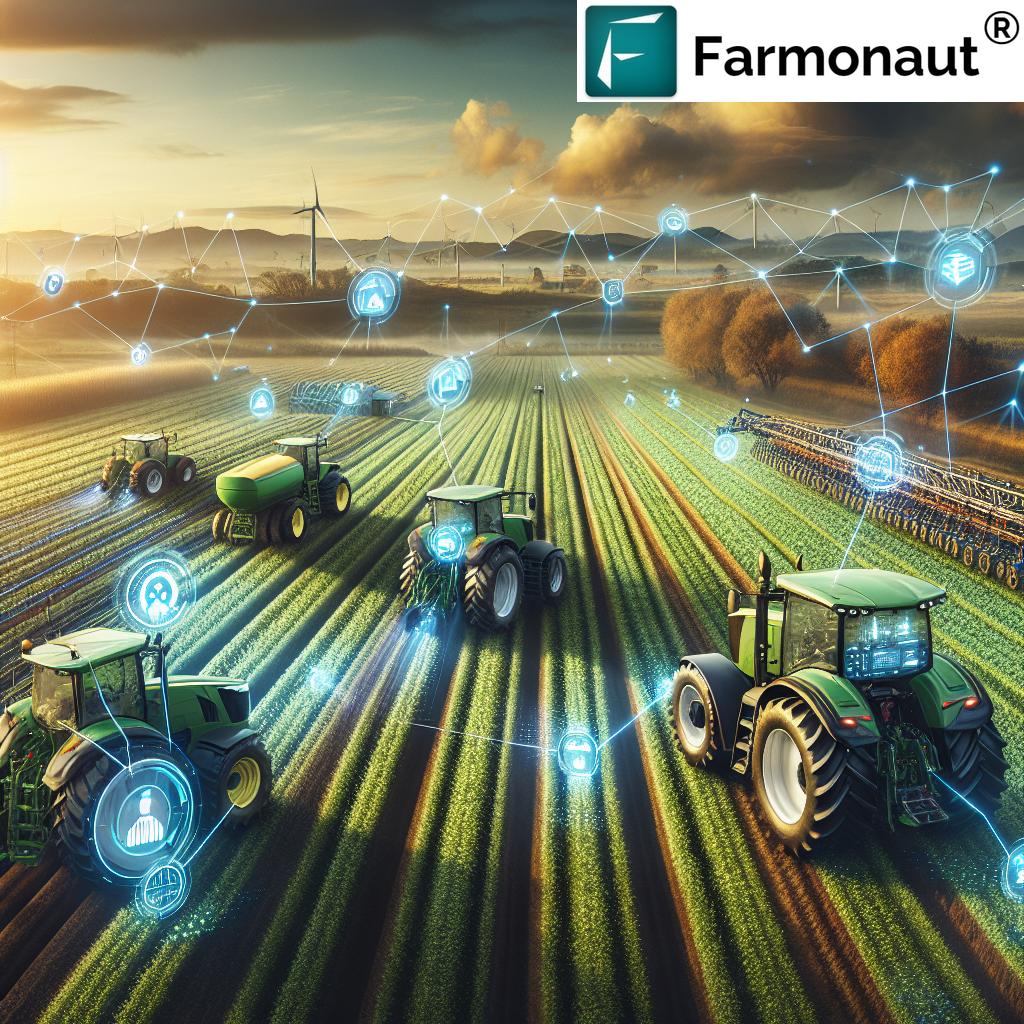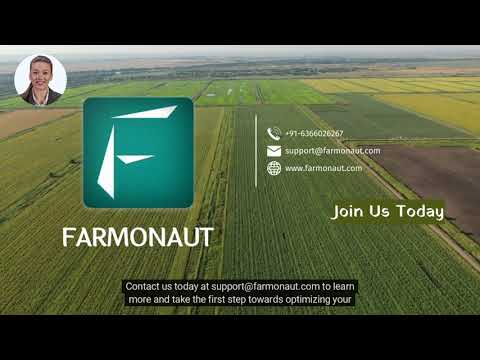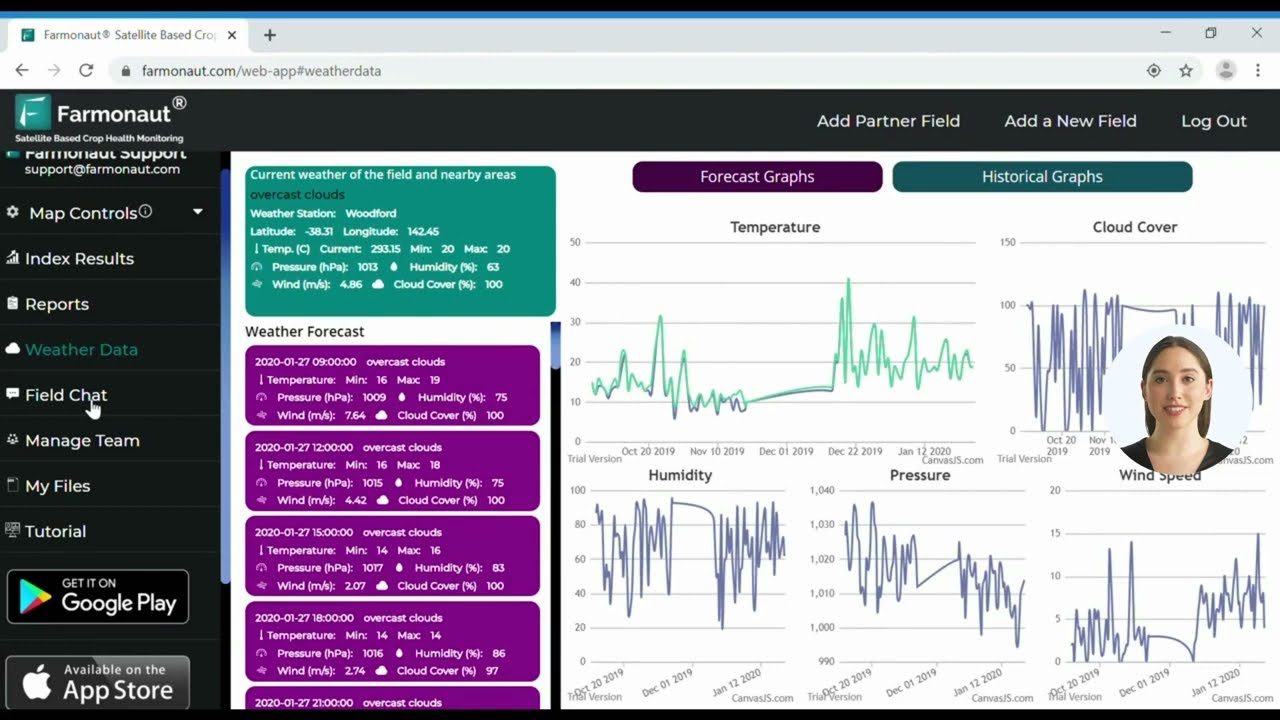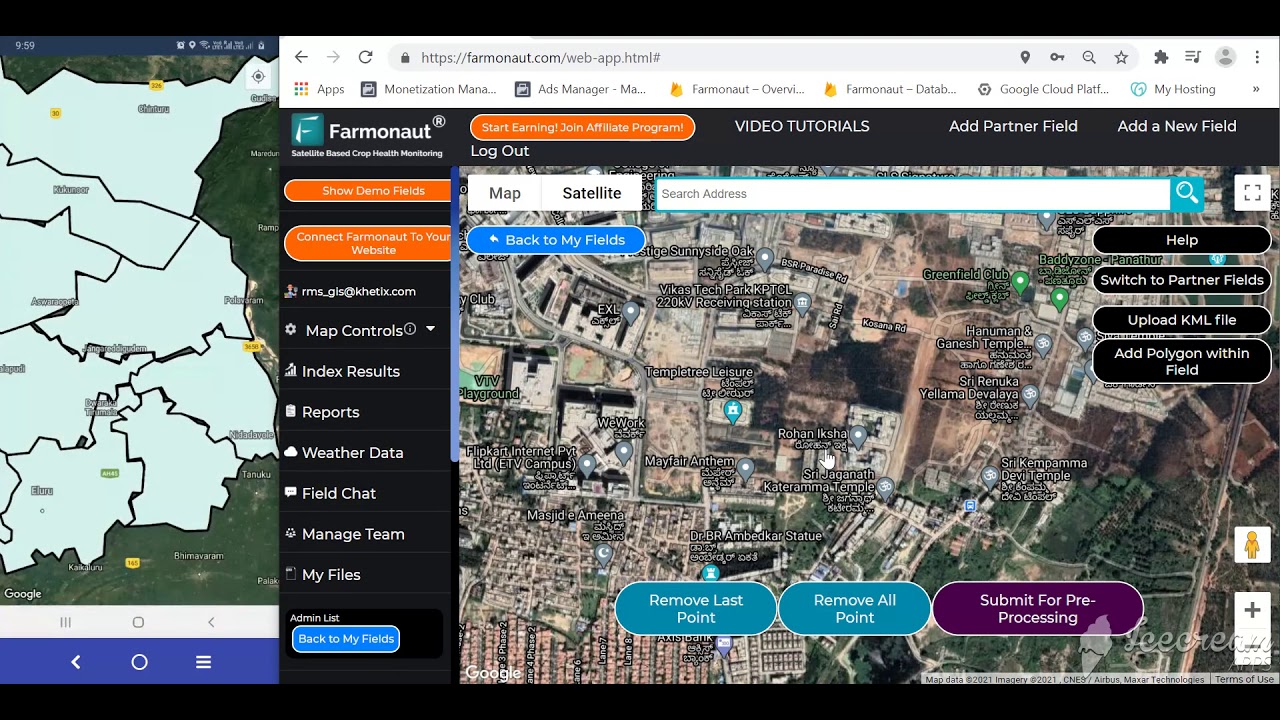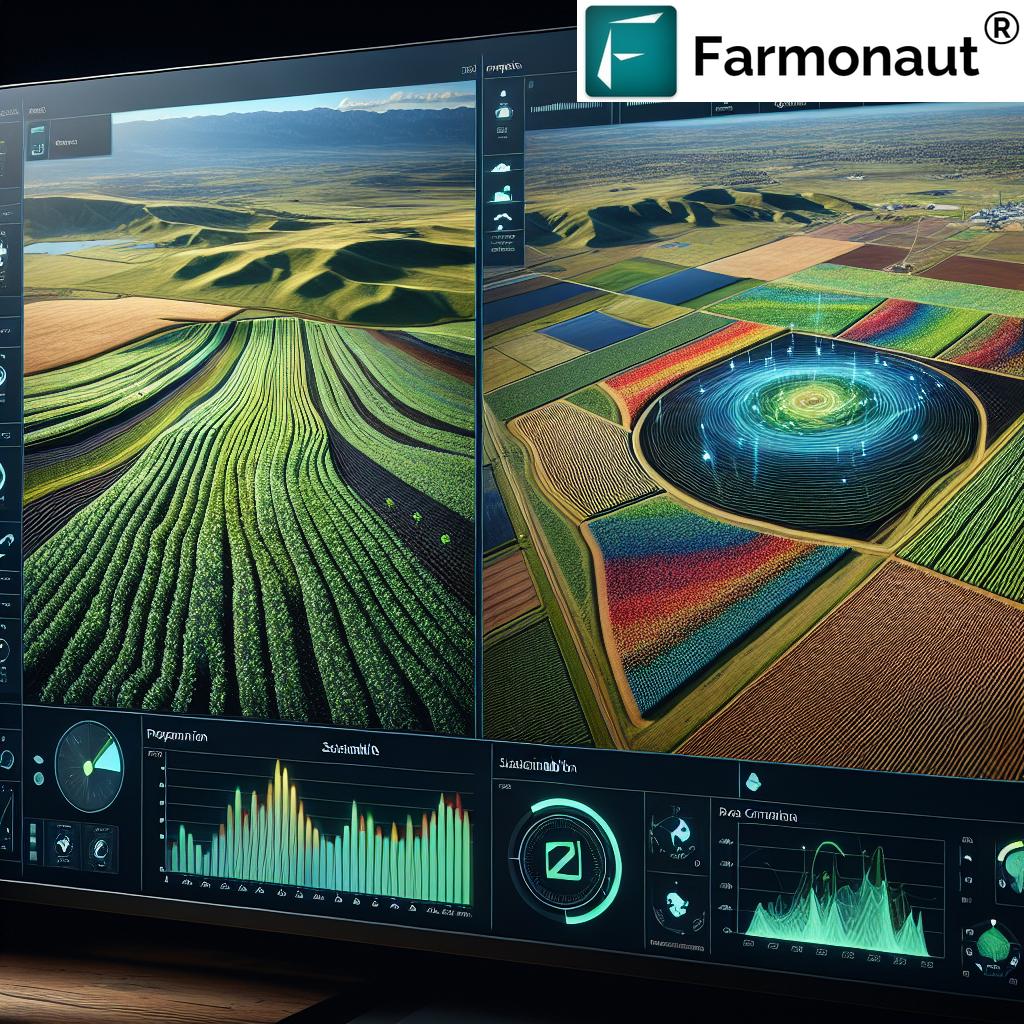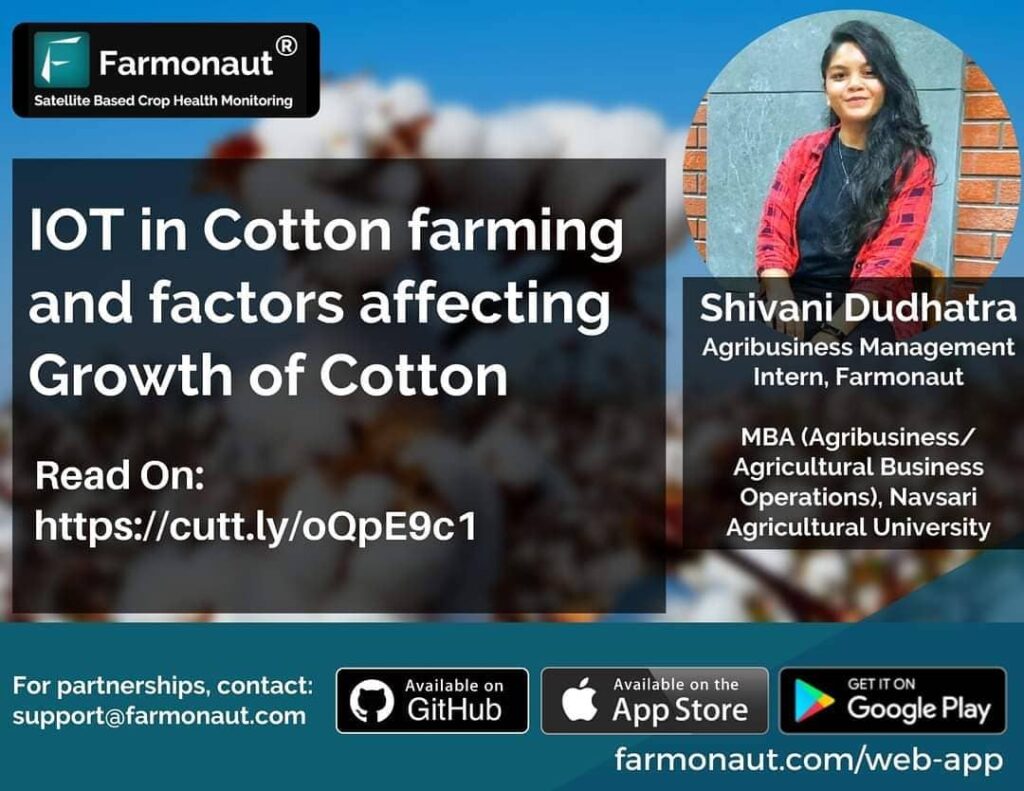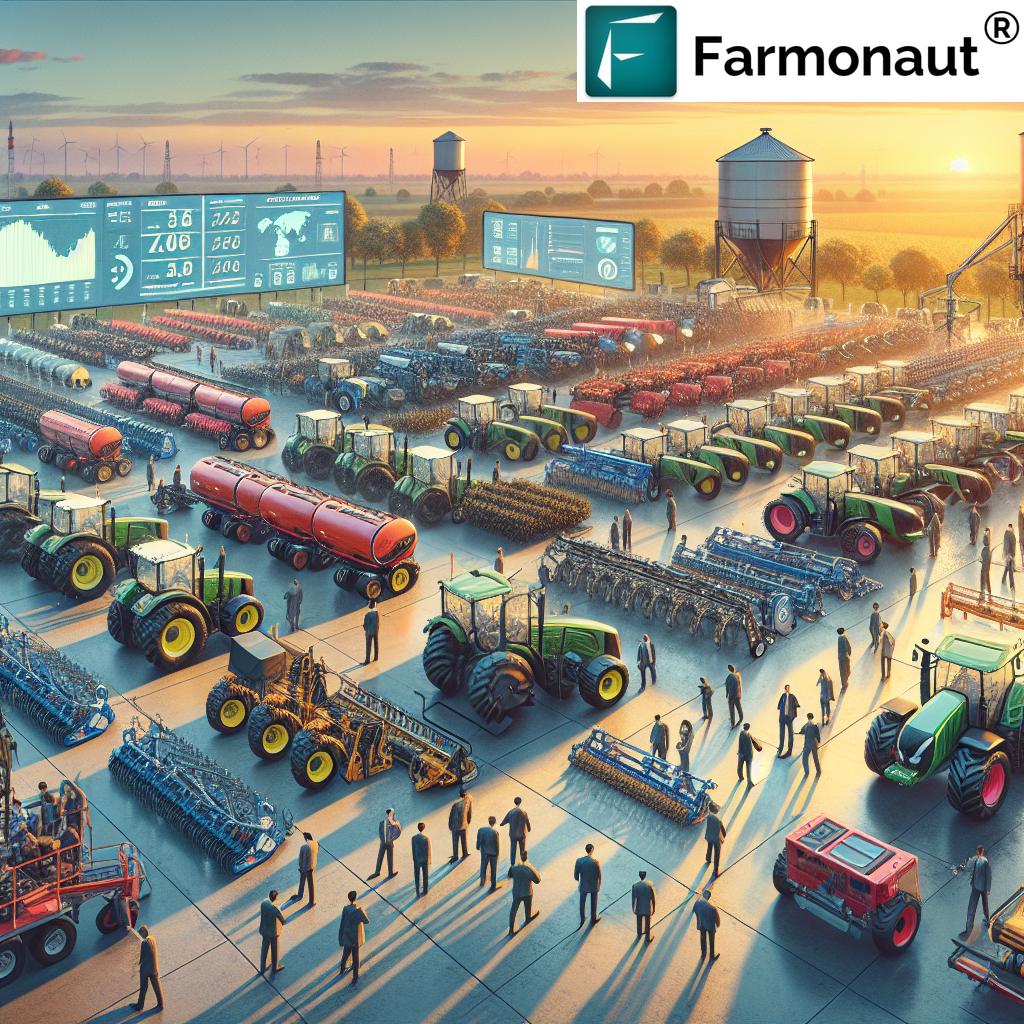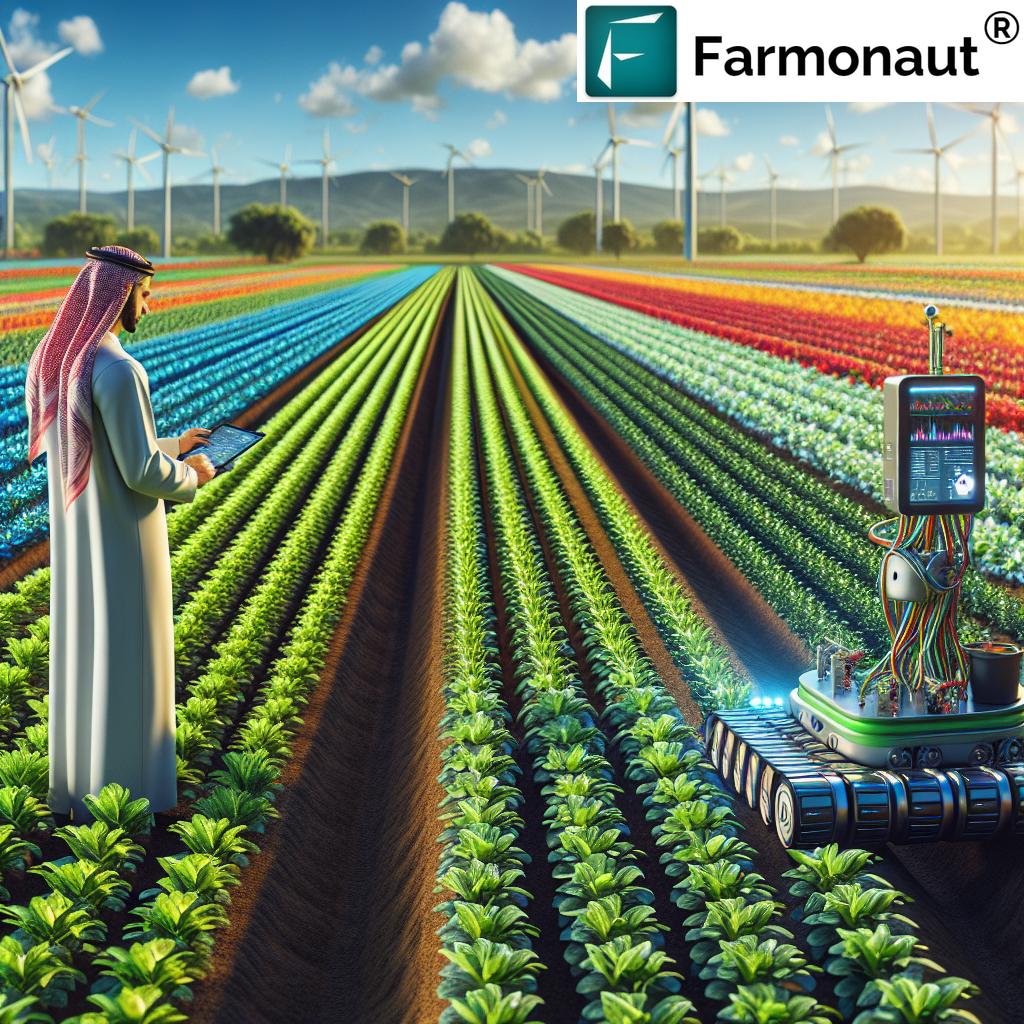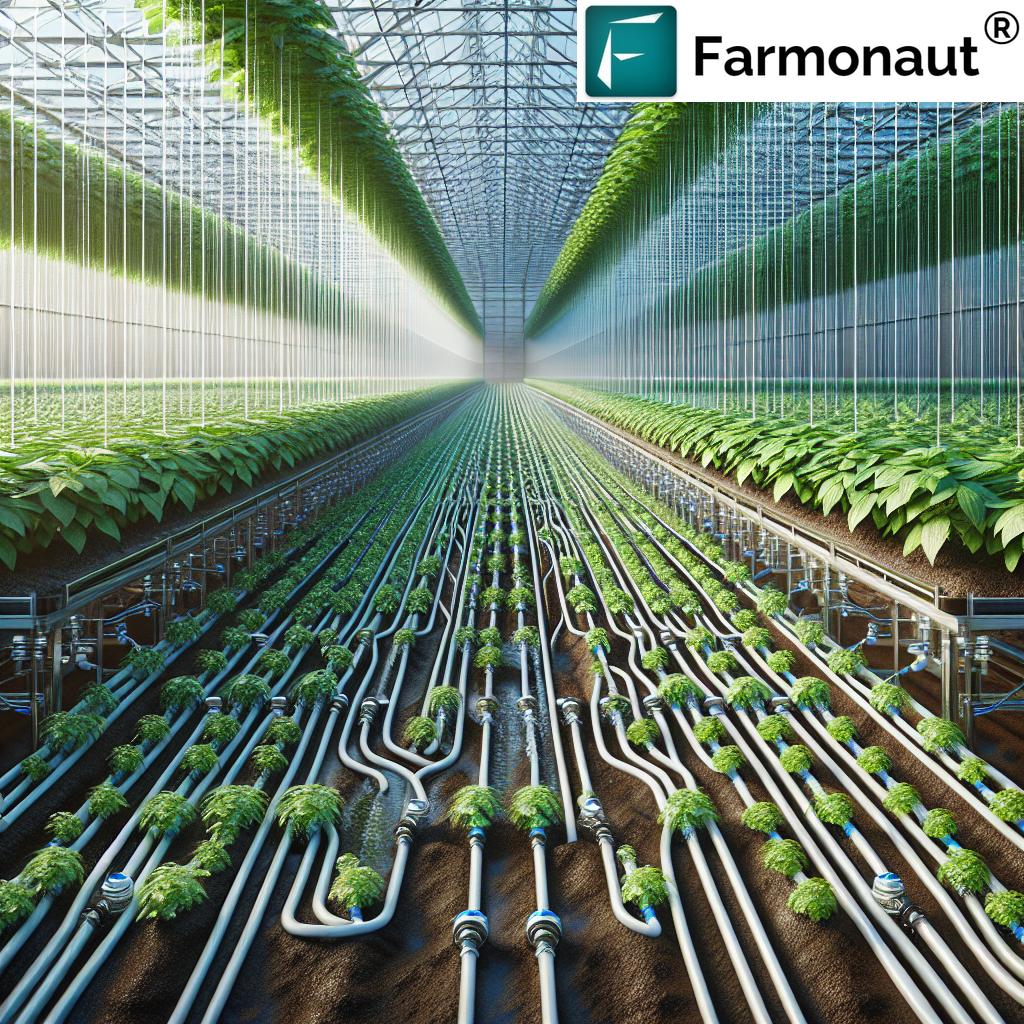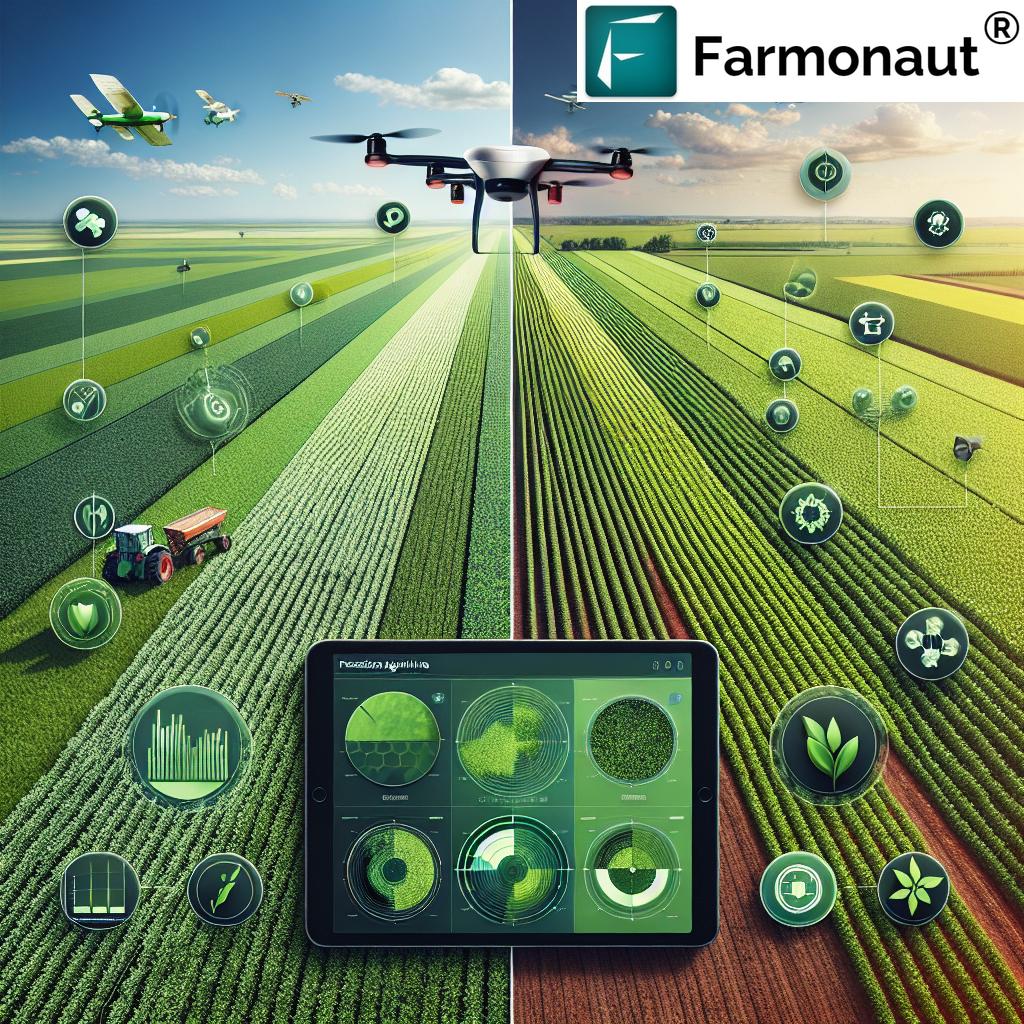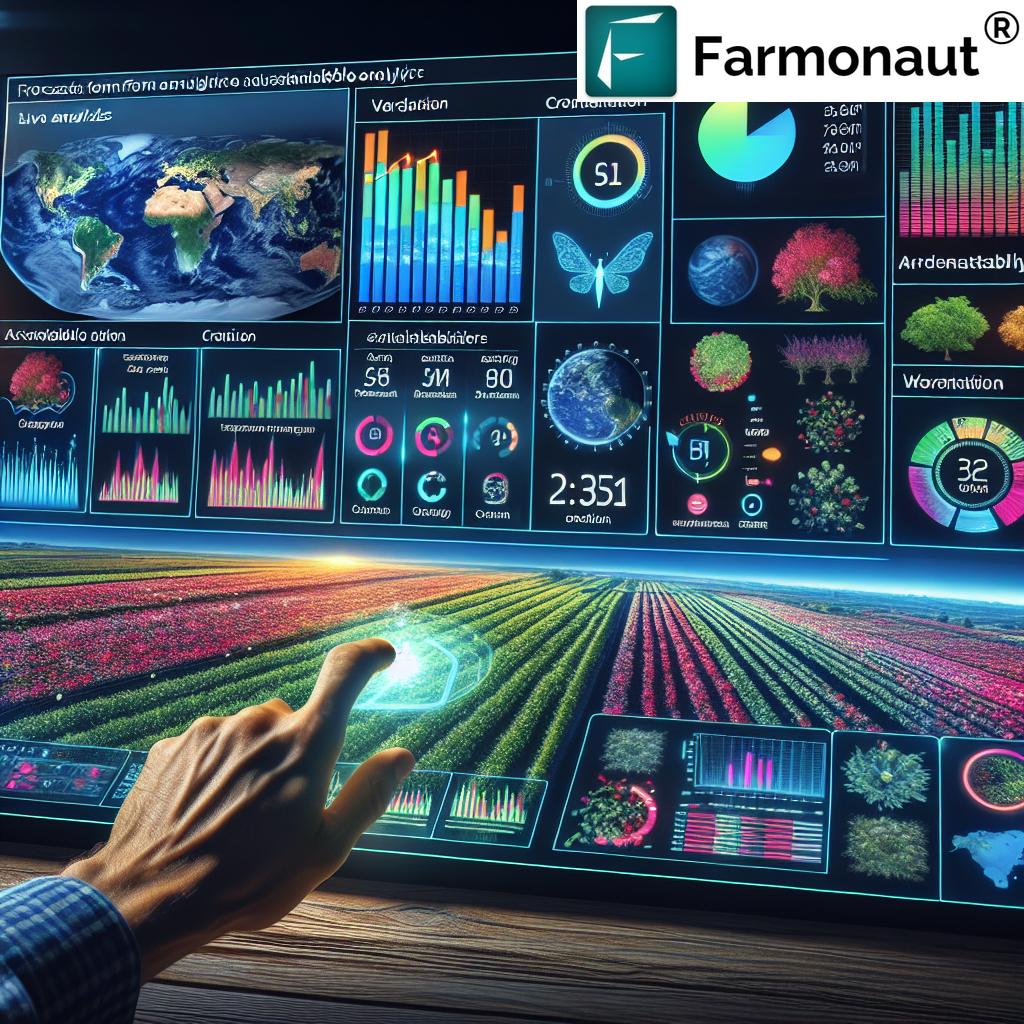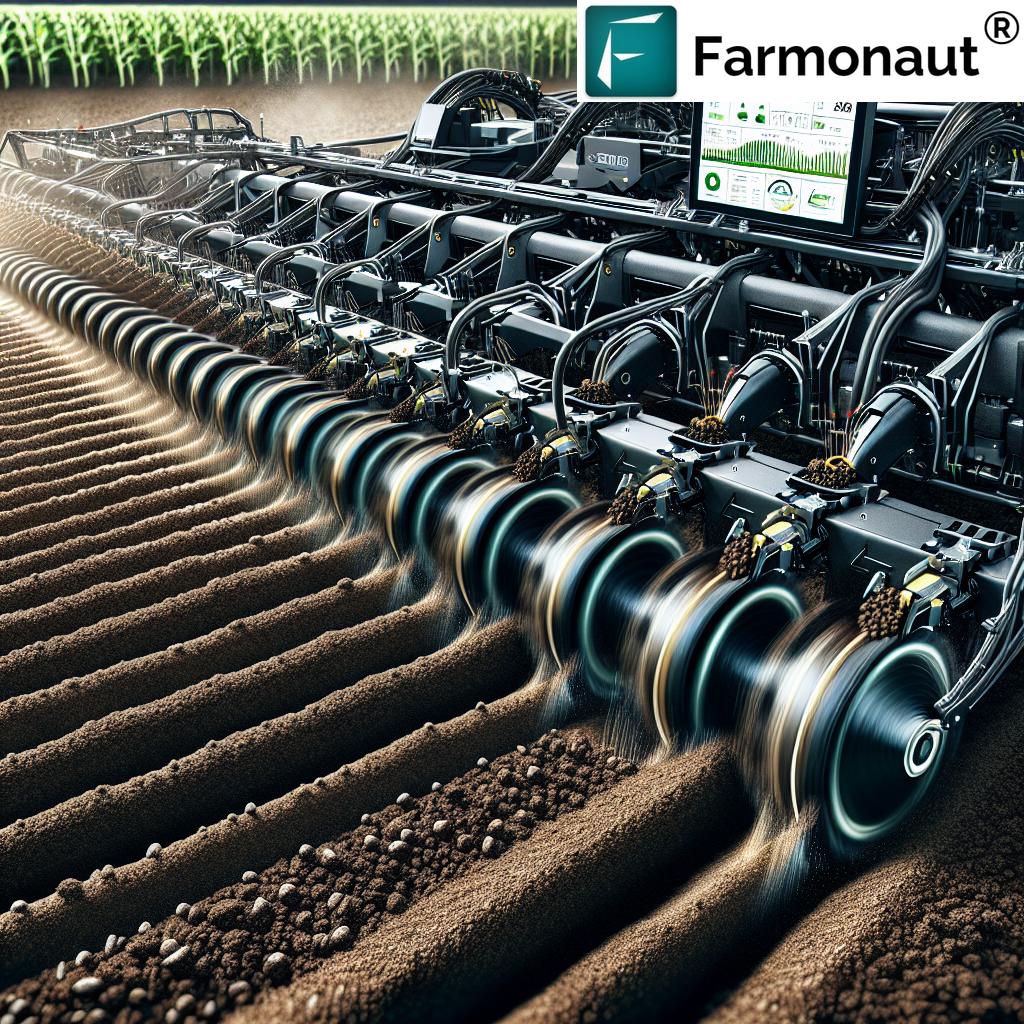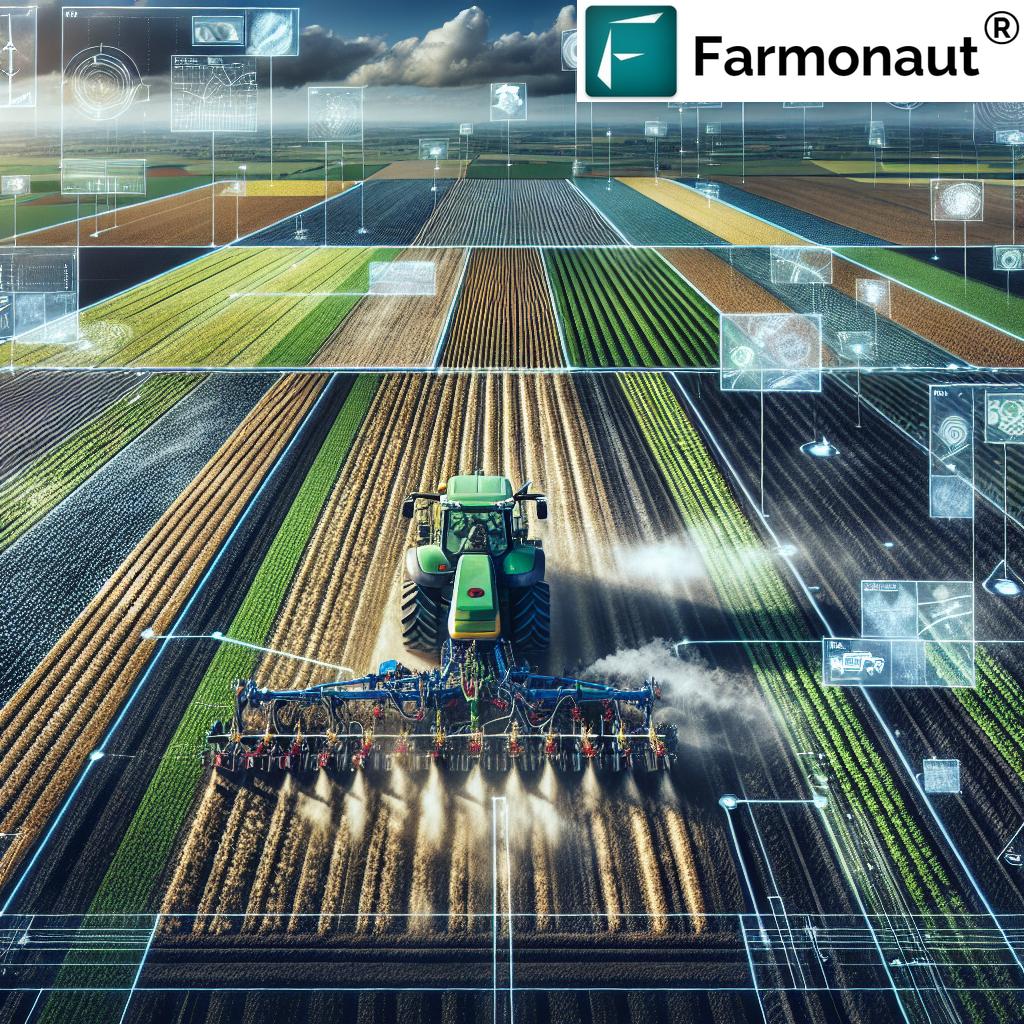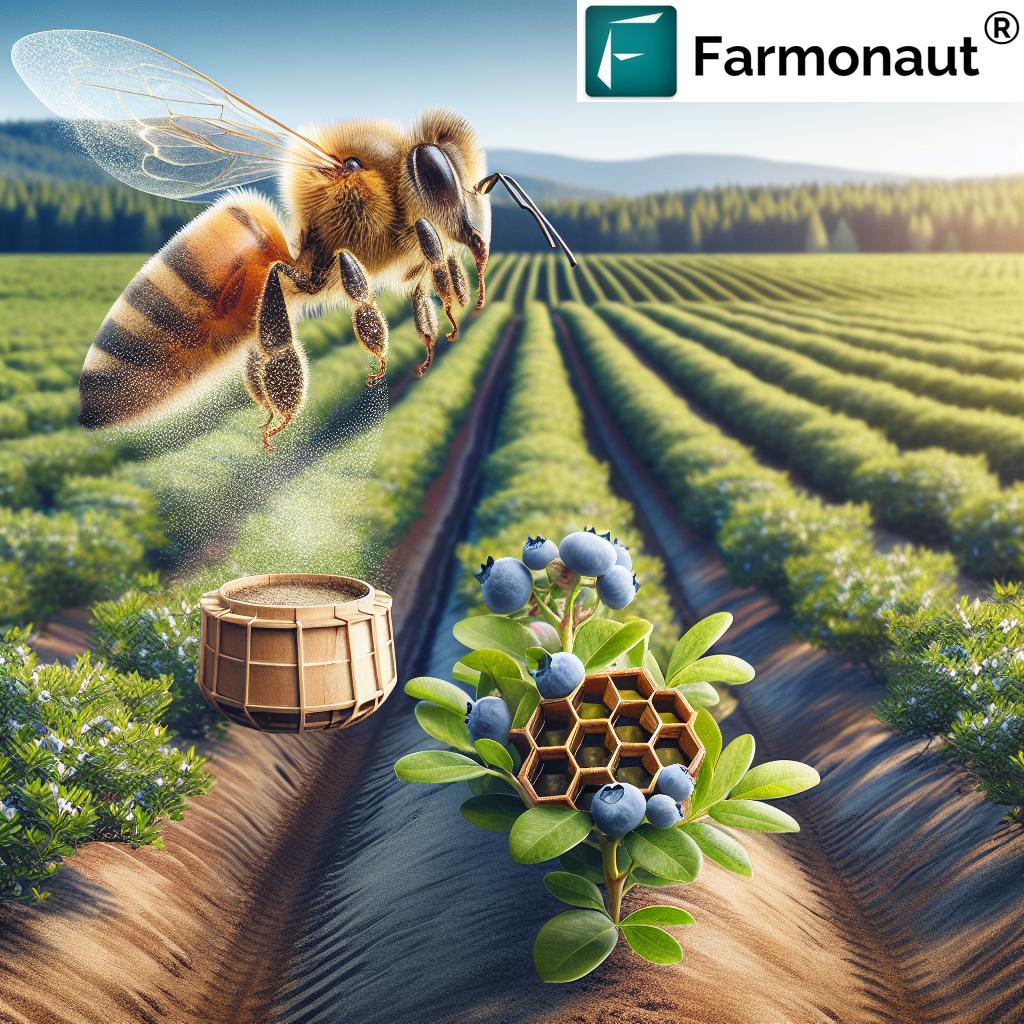Agricultural Machinery Connectivity: 7 IoT Farming Wins
Table of Contents
- Introduction: Agricultural Machinery Connectivity & IoT Farming Revolution
- Trivia: IoT & Telematics Trends
- 7 IoT Farming Wins—Focus on Agricultural Machinery Connectivity
- 1. Smart Remote Monitoring in Farming
- 2. Telematics for Farm Equipment & Data-Driven Fleet Management
- 3. Sustainable Farming Practices: Precision Irrigation & Resource Optimization
- 4. Autonomous Tractors and Automation’s Next Leap
- 5. Standardization in Agricultural Machinery & Seamless Interoperability
- 6. Cybersecurity in Agriculture: Securing the Connected Farm
- 7. 5G & Hybrid Networks: Boosting Rural Connectivity & Reliability
- Comparative Table: Key IoT Solutions in Agricultural Machinery
- Challenges in Integrating Advanced Technologies
- Farmonaut’s Data-Driven Approach to Precision Agriculture
- Future Outlook: What Lies Ahead for Smart Farming Solutions
- FAQ: Agricultural Machinery Connectivity, IoT, Telematics, and Smart Farming
“Over 70% of new tractors now feature IoT connectivity, enabling real-time data sharing and remote diagnostics.”
Introduction: Agricultural Machinery Connectivity & IoT Farming Revolution
The revolution in modern agriculture is deeply rooted in the integration of connectivity, advanced technologies, and smart farming solutions. At the heart of this transformation lies agricultural machinery connectivity, which encompasses the use of Internet of Things (IoT) devices, telematics, and standardized communication protocols. Together, these advancements are driving the evolution of farming from traditional, intuition-based methods to data-driven, efficient, and sustainable practices.
Agricultural equipment—once isolated mechanical tools—now functions as interconnected devices capable of seamless data exchange, remote management, and real-time performance monitoring. With rapid developments in IoT in agriculture, telematics for farm equipment, and the integration of 5G networks, farmers are empowered by actionable insights, energy savings, and enhanced operational efficiency.
This blog explores the seven major “IoT farming wins” transforming the sector, outlines the technology, the challenges, and shines a light on new potential for sustainable farming practices. We’ll also discuss how solutions such as ours at Farmonaut provide crucial, affordable tools for scalable, data-driven agriculture management worldwide.
7 IoT Farming Wins—Focus on Agricultural Machinery Connectivity
Agricultural machinery connectivity stands as the foundation for smart farming solutions, enabling the integration of sensors, real-time monitoring, autonomous machinery, and robust communication systems. Let’s delve into the seven most impactful wins in this space, each highlighting an aspect of the new era of modern agriculture.
1. Smart Remote Monitoring in Farming
One of the primary accomplishments of IoT in agriculture is the integration of smart sensors within machinery, resulting in the creation of a connected, continuously monitored equipment ecosystem.
- Continuous Monitoring: Integrated sensors measure vital parameters such as fuel efficiency, temperature, moisture levels, and crop health. This data is automatically transmitted to cloud-based platforms, enabling real-time access.
- Remote Diagnostics: Farmers and technicians can perform remote diagnostics, reducing downtime and allowing for predictive maintenance—ultimately maximizing machinery uptime and operational reliability.
- Example: A tractor equipped with IoT sensors alerts a remote operator about a potential overheating issue, allowing for intervention before costly repairs are needed.
Remote monitoring in farming offers actionable insights instead of generic averages, leading to precise resource allocation. It improves not only productivity but also machinery longevity and field safety.
2. Telematics for Farm Equipment & Data-Driven Fleet Management
Telematics platforms are at the forefront of agricultural machinery connectivity, enabling farmers to remotely monitor and control their equipment fleets. This elevates farm management to an entirely new level by turning vehicles and implements into intelligent, manageable assets on the network.
- Fleet Tracking: Fleet management solutions analyze vehicle location, routing, workload, and even idling times, allowing farmers to optimize their fleets and reduce unnecessary costs.
- Performance Analysis: By accessing real-time data on parameters such as speed, work progress, and fuel consumption, telematics provides a dashboard for improved decision-making and operational adjustments.
- Predictive Maintenance: Sensors and telematic systems monitor machinery health—detecting anomalies before failure occurs. Scheduled servicing based on actual usage minimizes unplanned downtime.
- Scalable Management: As large-scale farm management becomes more prevalent, telematics enables farmers, cooperatives, and agribusinesses to scale operations efficiently, even when machinery is distributed across vast territories.
These data-driven solutions not only decrease costs but also facilitate compliance with regulations, improve safety, and support the integration of standardized communication protocols for interoperability.
3. Sustainable Farming Practices: Precision Irrigation & Resource Optimization
Resource optimization is a cornerstone of sustainable farming practices. The connectivity of agricultural equipment—integrated with IoT sensors—enables a precision-based approach to soil and crop management. These advancements help in:
- Smart Irrigation Systems: Field-deployed sensors monitor soil moisture, temperature, and water levels. IoT-connected irrigation systems automatically adjust schedules and water output based on actual field data.
- Water Usage Optimization: By avoiding over-irrigation and targeting water delivery only where and when needed, wireless systems promote water conservation and reduce waste.
- Field-Level Customization: Different field zones may receive tailored irrigation, fertilizer, or pesticide applications, based on real-time platform data, contributing to overall resource savings and environmental protection.
With sustainable farming top-of-mind, IoT connectivity is crucial for reducing environmental footprint and aligning with global agricultural sustainability goals.
“Telematics adoption in agriculture has increased machinery efficiency by up to 25% in the past five years.”
4. Autonomous Tractors and Automation’s Next Leap
Autonomous machinery is redefining what agricultural equipment can achieve on its own. The rise of autonomous tractors demonstrates a seamless blend of connectivity, robotics, and AI.
- No-Operator Tractors: Tractors equipped with computer vision, multiple cameras, and AI can navigate fields, plant seeds, or harvest crops without requiring a human in the cab. Leading manufacturers like John Deere are setting the pace for the industry.
- Remote Supervision: Thanks to advanced agricultural machinery connectivity, a single operator can control, monitor, or even re-route autonomous machines remotely, using mobile devices or cloud-based interfaces.
- Productivity and Safety: Automation reduces labor requirements, maximizes operational hours, and allows for precision workflows—enabling higher productivity while mitigating safety risks in hazardous field conditions.
The future of farming undoubtedly includes more intelligent, autonomous, and connected machinery, all enabled by robust IoT infrastructure.
5. Standardization in Agricultural Machinery & Seamless Interoperability
Standardization is a key enabler for the interoperability of connected machinery. Organizations such as the Agricultural Industry Electronics Foundation (AEF) drive standards like ISOBUS, ensuring that tractors and implements from different brands connect, communicate, and operate together seamlessly.
- ISOBUS Protocols: These standardized protocols govern the electrical and data interfaces so that machines can integrate without compatibility issues.
- Enhanced Flexibility: Farmers gain the freedom to select and combine equipment based on task and need, not merely by brand, reducing operational costs and increasing fleet flexibility.
- Facilitating Automation: Standardization supports interoperability as farms integrate more autonomous, sensor-driven machinery into their workflows.
These protocols contribute directly to efficiency by streamlining communication and reducing downtime associated with machine incompatibility—a classic win for agriculture data management.
6. Cybersecurity in Agriculture: Securing the Connected Farm
With greater connectivity comes the growing risk of cyber threats. The ongoing shift towards connected agricultural machinery has made cybersecurity in agriculture a critical concern for iot farming.
- Data Protection: Sensitive farm data, remote control signals, and equipment settings transmitted over the network must be protected against interception, unauthorized access, and manipulation.
- Robust Security Measures: Contemporary telematic platforms incorporate encryption, secure authentication, and regular software updates to ensure the integrity and reliability of connected systems.
- Incident Response: Proactive cybersecurity protocols minimize the risk of disruptions from malware, ransomware, or sabotage—protecting both productivity and safety.
- Blockchain Traceability: Secure supply chain solutions, as provided by the Farmonaut Traceability Platform, prevent product fraud or loss by ensuring the authenticity and transparency of agricultural produce journeys.
Addressing cyber threats is non-negotiable, underpinning the success of all IoT in agriculture deployments.
7. 5G & Hybrid Networks: Boosting Rural Connectivity & Reliability
The reliability—and future growth—of connected agricultural machinery depends on robust, scalable connectivity solutions that function even in remote or rural environments where infrastructure can be limited.
- 5G Integration: Next-generation 5G networks promise ultra-low latency and high bandwidth data transmission, enabling real-time video, instant equipment feedback, and highly responsive automation.
- LPWAN and Hybrid Solutions: Low Power Wide Area Networks (LPWAN) are being adopted for their cost-effectiveness and range. Hybrid architectures that combine 5G and LPWAN can reduce connectivity costs by up to 30% while improving service coverage in rural fields (study).
- Satellite-Based Platforms: For truly remote areas, solutions like our Farmonaut platform leverage satellite imagery and data relay to enable connectivity, monitoring, and management at the field level—bypassing ground network limitations.
- Resilient Infrastructure: As farms scale, hybrid and redundant network architectures ensure continuous operation and adaptability to environmental and market changes.
In short, reliable, high-speed connectivity is essential for maximizing the benefits of autonomous machinery, telematics, and IoT-enabled smart farming solutions.
Key IoT Solutions in Agricultural Machinery: Features & Estimated Benefits
| IoT Solution/Technology | Example Use Case | Estimated Efficiency Gain (%) | Estimated Cost Savings per Year (USD) | Sustainability Impact |
|---|---|---|---|---|
| GPS-Guided Tractors | Automated seeding, tilling, harvesting | 10-20% | $5,000–$15,000 | Less fuel use, optimized field coverage |
| Smart Irrigation Systems | Soil moisture & weather adaptive watering | 15-30% | $3,000–$10,000 | Lower water usage, increased yield |
| Remote Diagnostics | Predictive maintenance for tractors and combines | 10-15% | $2,000–$8,000 | Reduced emissions, less downtime |
| Telematics-Based Fleet Management | Equipment tracking & performance analytics | 10-25% | $4,000–$12,000 | Lower fuel, efficient logistics |
| Autonomous Tractors | Fully automated field operations | 20-30% | $8,000–$20,000 | Reduced labor, less waste |
| Blockchain Traceability | Farm-to-fork supply chain records | 8-12% | $2,500–$6,000 | Transparency, reduced fraud |
| AI-Driven Crop Health Monitoring | Satellite and sensor warnings for pests/disease | 12-20% | $3,500–$9,000 | Reduced input use, better yields |
Challenges in Integrating Advanced Technologies & Connectivity
Integrating connectivity in agricultural machinery offers immense opportunities but comes with engineering and operational challenges that must be addressed to ensure system reliability, safety, and field longevity:
- Harsh Environment: Agricultural equipment operates under extreme temperatures, high humidity, dust, vibration, and sunlight. Designers must ensure enclosures are robust and weather-resistant to protect sensitive electronics and sensors (source).
- Reliable Connectivity: Rural and remote locations often lack reliable cellular infrastructure. Hybrid solutions leveraging LPWAN, 5G, and satellite are crucial for continuous data transmission and field management.
- Cybersecurity Threats: As machinery becomes more connected, the risk of cyberattacks increases. Adequate cybersecurity measures such as regular software updates, secure protocols, and incident response plans are paramount (source).
- Standardization & Interoperability: Advances in protocols and efforts by organizations such as the AEF are vital, but machinery diversity and varying standards remain ongoing hurdles for seamless integration.
- Cost of Implementation: The initial cost for advanced IoT and telematics integration can be significant for small and medium farmers, although the long-term operational savings often quickly offset the investment.
Addressing these challenges is foundational to achieving reliable and resilient agriculture data management for large- and small-scale farming alike.
Farmonaut’s Data-Driven Approach to Precision Agriculture
At Farmonaut, we are dedicated to making data-powered, affordable precision agriculture accessible for everyone—from individual farmers to governments and agribusinesses.
- Satellite-Based Crop Monitoring: We harness multispectral satellite data to equip farmers with real-time crop health, soil moisture, and vegetation analysis. This empowers timely, informed decisions.
- AI-Based Advisory & Resource Management: Our Jeevn AI system offers personalized advisory, weather forecasting, and actionable crop strategies. For resource management, we deliver fleet management, logistics, and carbon footprint analysis for modern, sustainable operations.
- Blockchain-Based Product Traceability: Our traceability platform assures supply chain security and authentication from farm to fork, fighting fraud and ensuring product safety.
- Large Scale Management & API Integration: Our large scale farm management solutions and open API and developer documentation enable scalable monitoring, analysis, and integration into your systems.
- Crop Loan & Insurance Verification: Our satellite-powered crop loan and insurance platform expedites financing access and reduces fraud risk.
By leveraging advanced technology, affordable subscriptions, and an intuitive Android/iOS/Web interface, we promote sustainable farming practices, boost efficiency, and advance the global shift towards data-driven agriculture.
Future Outlook: What Lies Ahead for Smart Farming Solutions
The momentum for agricultural machinery connectivity is accelerating:
- 5G and Next-Gen Infrastructure: Expanding high-speed networks will support real-time remote control, richer data exchange, and scalable autonomous machinery deployment.
- AI & Machine Learning: Ongoing ML advancements will refine yield forecasting, automate equipment settings, and provide predictive alerts—enhancing decision-making and reducing risks.
- Expanded IoT Device Ecosystem: The upward trend in sensor diversity (soil, climate, pest, yield) will extend data granularity, supporting everything from smart irrigation to in-field crop quality assessment.
- Standardization & Open Protocols: Continued standardization efforts—especially from the AEF and electronics industry—will resolve remaining interoperability issues, unlocking broader machinery integration.
- Security-By-Design: Cybersecurity will remain a focus; manufacturers will embed resilient architecture and update systems regularly to defend against evolving threats.
- ESG & Sustainability: The next wave of agricultural innovation will be closely tied to environmental, social, and governance (ESG) requirements—rewarding those leveraging solutions for lower emissions and better resource optimization.
In short, the future is data-driven, sustainable, autonomous—and accessible to all farmers, everywhere.
FAQ: Agricultural Machinery Connectivity, IoT, Telematics & Smart Farming
What is agricultural machinery connectivity?
Agricultural machinery connectivity refers to the integration of advanced networking, IoT devices, and telematics into farming equipment. This enables machinery to exchange real-time data, be remotely monitored, and managed, boosting operational efficiency and sustainability.
How does IoT in agriculture benefit farmers?
IoT in agriculture provides continuous field monitoring, smart irrigation, predictive maintenance, and actionable insights—helping farmers increase yields, reduce input costs, save resources, and minimize downtime.
What role does telematics play in farm equipment?
Telematics for farm equipment delivers real-time analytics on machinery performance, location, and usage. It supports fleet management, predictive maintenance, and operational optimization for farmers and agribusinesses.
Is interoperability a problem for connected agricultural machinery?
Historically, yes. But the adoption of standardization in agricultural machinery—led by protocols like ISOBUS and organizations like the AEF—allows equipment from different brands to communicate and work together seamlessly.
How are cybersecurity threats addressed in agriculture?
Cybersecurity in agriculture involves secure communication protocols, data encryption, regular system updates, and manufacturer compliance with best practices. Many farms also use blockchain-based platforms for added security and product traceability.
Can smallholder farmers afford these technologies?
Yes—solutions like Farmonaut’s scalable, subscription-based platform make precision agriculture, crop health monitoring, and data-driven insights affordable for all operations, regardless of size or geography.
What future trends will shape agricultural machinery?
The expansion of 5G networks, development of autonomous tractors and robotics, AI-driven analytics, and continued improvements in cybersecurity are paving the way for even smarter and more sustainable farming practices globally.
Conclusion: Connected, Efficient, and Sustainable—The Farm of the Future
The agriculture sector is being revolutionized by agricultural machinery connectivity. With IoT devices, telematics, autonomous machinery, and standardized communication protocols, farms can now operate more efficiently, increase productivity, and adopt environmentally responsible practices. From remote diagnostics to automation, and from interoperability to cybersecurity, technology is fundamentally reshaping the way food is produced.
Our collective mission at Farmonaut is to make these data-driven, smart farming solutions accessible and affordable for all. We enable actionable insights and real-time decisions that lower costs, improve yields, and promote sustainability worldwide. By tackling the challenges of connectivity, standardization, and security—and staying at the forefront of innovation—we are cultivating a future where farmers, agribusinesses, and society benefit together.
Embrace the connected future of farming—a new era where technology and tradition unite for the greater good of food, people, and planet!


